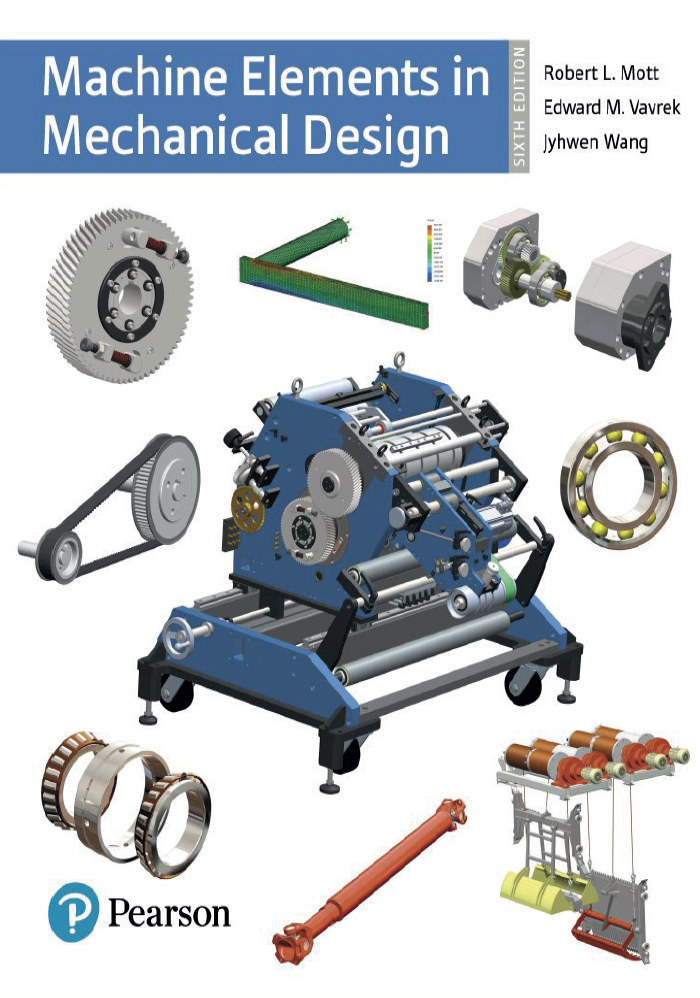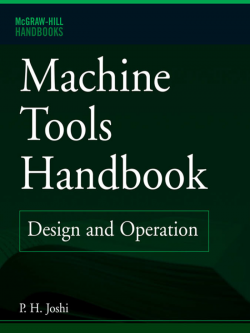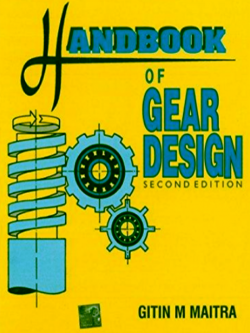Description
The objective of this book is to provide the concepts, procedures, data, and decision analysis techniques necessary to design machine elements commonly found in mechanical devices and systems. Students completing a course of study using this book should be able to execute original designs for machine elements and integrate the elements into a system composed of several elements.
This process requires a consideration of the performance requirements of an individual element and of the interfaces between elements as they work together to form a system. For example, a gear must be designed to transmit power at a given speed. The design must specify the number of teeth, pitch, tooth form, face width, pitch diameter, material, and method of heat treatment. But the gear design also affects, and is affected by, the mating gear, the shaft carrying the gear, and the environment in which it is to operate. Furthermore, the shaft must be supported by bearings, which must be contained in a housing. Thus, the designer should keep the complete system in mind while designing each individual element.
This book will help the student approach design problems in this way. This text is designed for those interested in practical mechanical design. The emphasis is on the use of readily available materials and processes and appropriate design approaches to achieve a safe, efficient design. It is assumed that the person using the book will be the designer, that is, the person responsible for determining the configuration of a machine or a part of a machine. Where practical, all design equations, data, and procedures needed to make design decisions are specified. It is expected that students using this book will have a good background in statics, strength of materials, college algebra, and trigonometry. Helpful, but not required, would be knowledge of kinematics, industrial mechanisms, dynamics, materials, and manufacturing processes.
Among the important features of this book are the following:
- It is designed to be used at the undergraduate level in a first course in machine design.
- The large list of topics allows the instructor some choice in the design of the course. The format is also appropriate for a two-course sequence and as a reference for mechanical design project courses.
- Students should be able to extend their efforts into topics not covered in classroom instruction because explanations of principles are straightforward and include many example problems.
- The practical presentation of the material leads to feasible design decisions and is useful to practicing designers.
- The text advocates and demonstrates use of computer spreadsheets in cases requiring long, laborious solution procedures. Using spreadsheets allows the designer to make decisions and to modify data at several points within the problem while the computer performs all computations. See Chapter 6 on columns, Chapter 9 on spur gears, Chapter 12 on shafts, Chapter 13 on shrink fits, and Chapter 18 on spring design. Other computer-aided calculation software can also be used.
- References to other books, standards, and technical papers assist the instructor in presenting alternate approaches or extending the depth or breadth of treatment.
- Lists of Internet sites pertinent to topics in this book are included at the end of most chapters to assist readers in accessing additional information or data about commercial products.
- In addition to the emphasis on original design of machine elements, much of the discussion covers commercially available machine elements and devices, since many design projects require an optimum combination of new, uniquely designed parts and purchased components.
- For some topics the focus is on aiding the designer in selecting commercially available components, such as rolling contact bearings, flexible couplings, ball screws, electric motors, belt drives, chain drives, wire rope, couplings, clutches, and brakes.
- Computations and problem solutions use both the International System of Units (SI) and the U.S. Customary System (inch-pound-second) approximately equally. The basic reference for the usage of SI units is IEEE/ASTM-SI-10 American National standard for Metric Practice. This document is the primary American National Standard on application of the metric system.
- Extensive appendices are included along with detailed tables in many chapters to help the reader to make real design decisions, using only this text. Several appendix tables feature commercially available structural shapes in both larger and smaller sizes and many in purely metric dimensions are included in this edition to give instructors and students many options for completing design problems.





